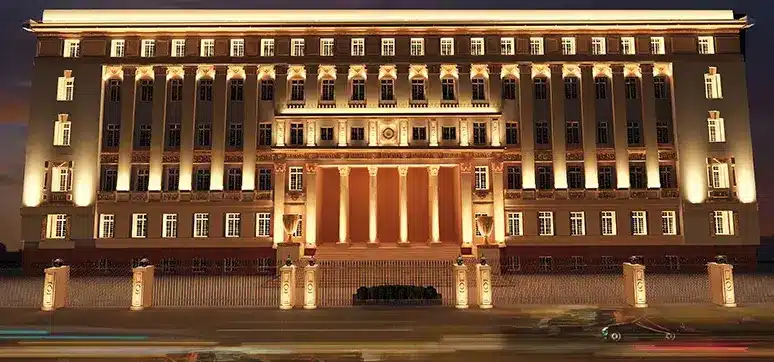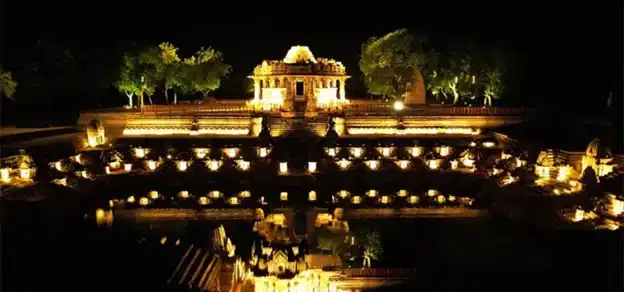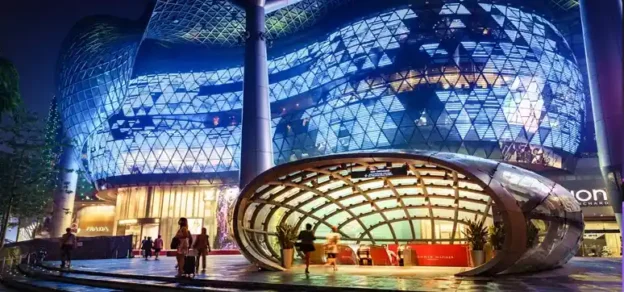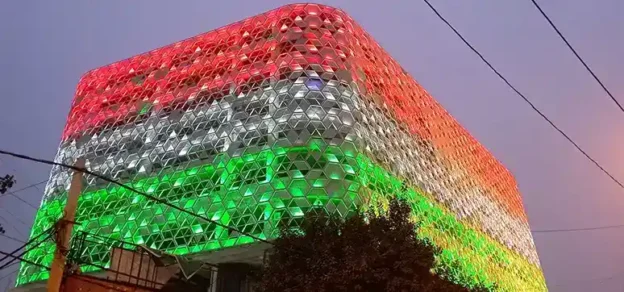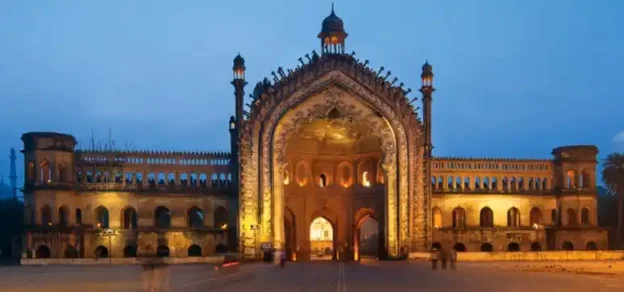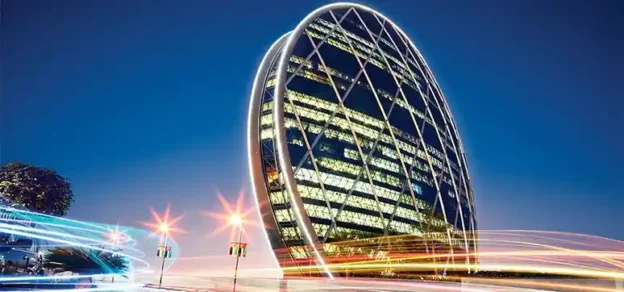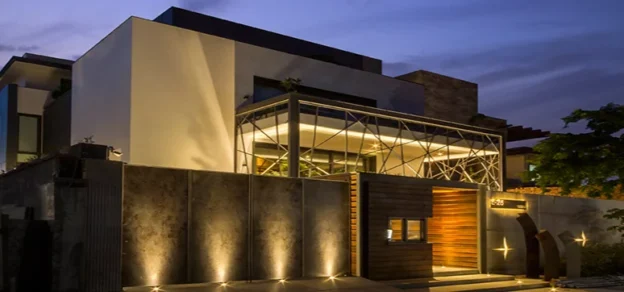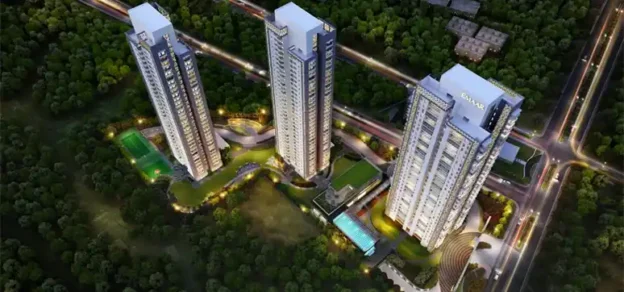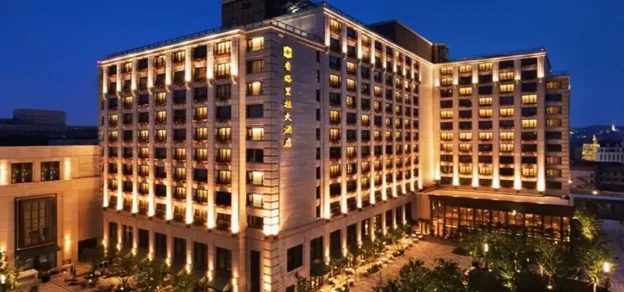Architectural lighting design is lighting in favour of architecture a form of complementary design, what architecture implies lighting follows and enhances. Façade lighting design is lighting that allocates the strength of a building and augments it accordingly. Thus, façade lighting design is a design process of sequence and art, a process that takes the flow of thought as any other architectural design process. Analysis and data gathering, concept finding, and finally how to approach, execute and implement seamlessly.
The following type of data gathering and analysis is firstly acquired to start the trail of thought that will lead to the conceptual approach of the design.
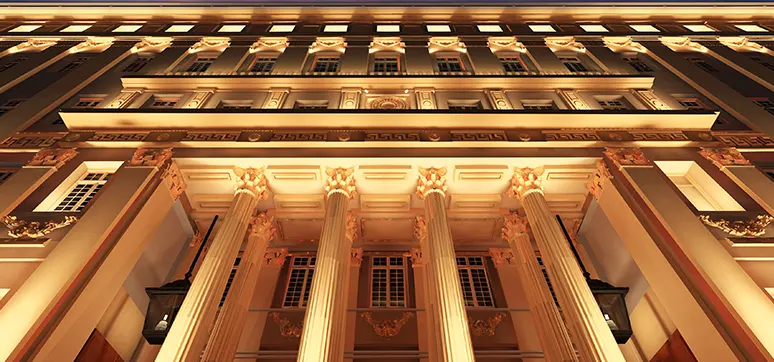
• What type of building is it?
• Under what form of architecture does it fall?
• Where is it located?
• Where in the city does it stand?
• Where does it show on a skyline?
• What is the nature of the area it is situated?
• What is the architectural genre of the area surrounded?
Sequentially a lighting designer starts to study the building closely what era it belongs to, whether it is a newly built or a heritage-listed building, and what type of design the building stands for. How would proper lighting design positively affect the building by elongating the façade experience to offer and setting the building as an eye-catching landmark that is worth creating the identity of the façade through lighting design?
 Studying hard the history of and nature of the building whether it is a modern commercial building that displays a glimpse of its corporate identity and DNA, a skyscraper that shows miles away on a skyline, or a heritage-listed building that light can only play tribute for its greatness and timelessness. Following is the search for strengths, what makes the building stand out and what would visually be an inevitability to highlight, defining the hierarchy of elements and all textured materials you would love to see come to life by night, like an ornament that is too detailed not to be shown and seen from a distance.
Studying hard the history of and nature of the building whether it is a modern commercial building that displays a glimpse of its corporate identity and DNA, a skyscraper that shows miles away on a skyline, or a heritage-listed building that light can only play tribute for its greatness and timelessness. Following is the search for strengths, what makes the building stand out and what would visually be an inevitability to highlight, defining the hierarchy of elements and all textured materials you would love to see come to life by night, like an ornament that is too detailed not to be shown and seen from a distance.
Conceptual Theory
Focal Glow, ambient luminescence, and play of brilliants persist to be the fundamental theoretical statements of Architectural lighting design created initially by Richard Kelly. Richard Kelly understood light’s ability to shape space and create a sense of visual awareness that could evoke a range of human emotions, therefore, creating the fundamental primary lighting concepts to create endless possibilities of design concepts. Lighting design is centred on three principal techniques – highlighting objects, washing surfaces, and creating sharp detail.
Conceptual Approach and Implementation
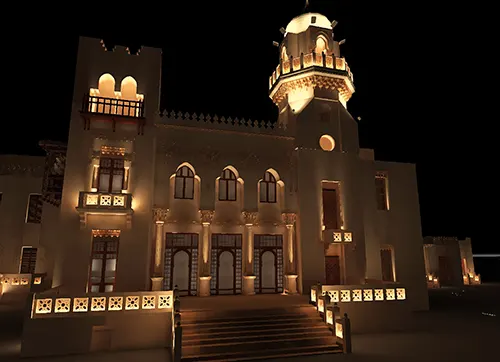
After doing the proper analysis and coming up with the conceptual design theory that will serve the building and its strengths. Executing the conceptual theory into an action plan and matching the lighting effects to its suitable fixture specifications is what makes your design come to life with absolute greatness.
The colour temperature, lumen, wattage, CRI, and beam angles are the main specification to determine regarding any project or element, carefully matching the concept with the technicalities will lead the design toward the utmost outcomes. Dividing façades into three primary categories each of which has subcategories to follow:
1. Heritage Buildings
• UNESCO Listed
• National Listed Building
2. Modern Commercial Buildings
• Vertically oriented
• Horizontal oriented
• Solid façade
• The difference in volumetric blocks
• Cladded façade
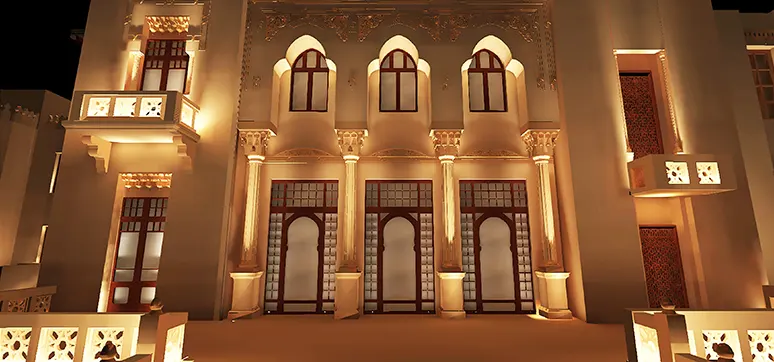
3. Highrise Buildings
• Media façade
• Pixel façade
• Cladded façade
Heritage buildings: Heritage buildings are buildings to be considered to have withstood the test of time for more than 100 years and are mostly re-directed to be used as governmental buildings, city museums, or historic sites. Focusing on magnifying the greatness of the building and keeping its parameters clear, which primarily lies in the proportion of the building, therefore lighting design would be used to highlight the height width, and all detailing of the building.
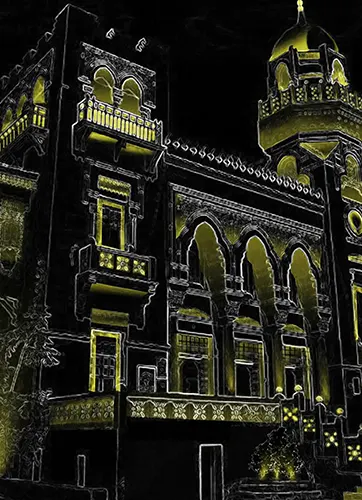
Amber colour temperature -2700K along with warm white-3000K are mainly used in heritage buildings and monumental elements as it enhances the original plaster colour and texture of the building giving depth and appreciating its history and respecting all time factors occurring. Highlighting ornamentation and valuable detailing using a variety of fixtures that come in different sizes, beam angles, and wattages. While also picking the suitable specifications of fixtures are the main tool for achieving a well-designed outcome.
For a draped ornamentation above a Greco-Roman window in a heritage building would need a narrow beam-angled fixture of 8-12 degrees. While a crowned column head would need a wider beam angle of 20-40 degrees, using the right spec at the right place with the right directional aim is crucial for any design. Colonnades of huge heights are uplighted with a variety of diagonal up lights according to height, texture, and diameters; heights of subjected elements dictate the beam angle that needs to achieve a homogeneous spread of light. The higher the column or element the narrower a beam angle should be to cover such reach.
Repetitive rows of windows are high-lit using window lights of a light spread of 360 degrees to give a visual repetitive hierarchy of light, a textured wall or a solid vertical area is lighted up using a wall washer fixture; positioning the fixture in the ground with different spacing from needed area determines the type of effect.
Grazing: A textured wall of stone when grazed gives depth and dimension to the area creating and enhancing finished materials
Washing: Distributing light evenly and homogeneously on solid walls without casting any shadows or depths
Commercial buildings:

Modern-built buildings feature parametric façades, solid walls and a lot of cladding, the lighting design approach with such buildings is usually add-on fixtures to create or enhance geometry rather than playing with effects and light beam angles; in this category, the lighting fixtures are the hero element that created a geometry on a canvas, whether it is pixel lights, linear or geometrical shapes.
The colour temperatures and RGB coloured lights play a huge role in the design and the conceptual approach, buildings of this category are usually studied to identify and prolong their visual visibility and corporate identity identification at night among other buildings.
Control systems regarding modern façade buildings’ lighting design allow the building to show up in various scenes and scenarios creating a landmark and an eye-catching focal point. Celebrating a national holiday, supporting a global awareness campaign, or paying tribute just by using light. Controllers allow a wide spectrum and variation of colours and scenes for the same fixtures. Dimming and intensifying light intensities to create an illusion scene of fading stars, shifting the colours of a corporate identity to create a remarkable marketing experience.
The architecture and orientation of a building lead to the conceptual approach; using the building as a canvas, creating geometry with pixel dot lights or linear fixtures of various lengths to create a unique design that serves the purpose, is an approach to light up such buildings. Solid façades and areas of solid spaces are optimally washed using fixtures such as ground-up lights and washers. Another alternative is to flood the entire area with projectors mounted on the ground or on a 3-meter must, only if there is no detailing to the waist by flooding the entire area.
Vertically oriented buildings and façades with vertical cladding elements, louvers, or vertical extrusions are typically enhanced by linear elements such as linear fixtures, linear LED flex, or even by uplighting the element using a narrow beam angle up light. Regarding horizontally-oriented buildings creating a glow effect that extends alongside the width of the building is one of the key elements to emphasise the parameters of such buildings changing the orientation of linear fixtures to accommodate the orientation of the façade and show true proportions is an approach that well serves such buildings. Keeping the outlines of the building and extending the visual even if the façade is curved or parametric a traced lighting effect that follows will emphasise and enhance the feel and initial concept of architecture.
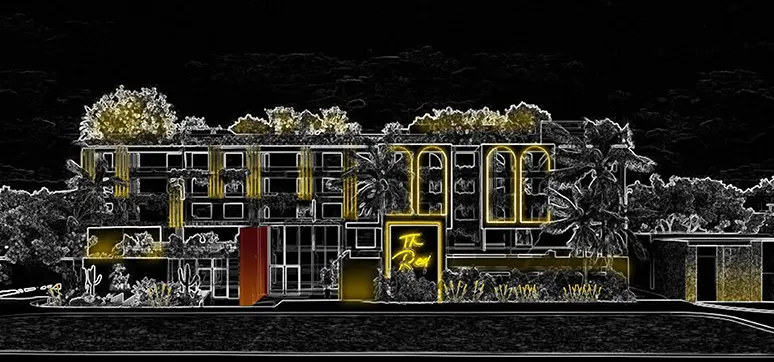
Highrise Buildings
Highrise buildings are buildings that form the entire vision of a city’s skyline, giving a sense of greatness and achievement therefore tracing it with light aims to give the same purpose. Collectively, the objective of façade lighting design is to extend the visual of a façade at night hours and benefit from a building for an elongated period of time, whether a media façade lighting design is created by LED screens, pixel dots glowing all along its height or linear elements are staggered across the vast height. Using light in favour of the marketing and the corporate’s identity is just one of many add-ons architectural lighting design has to offer.
